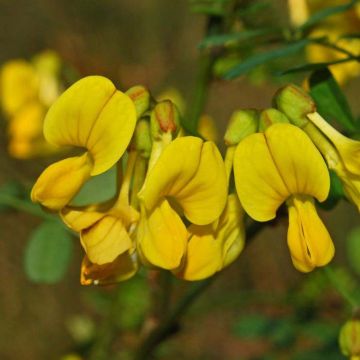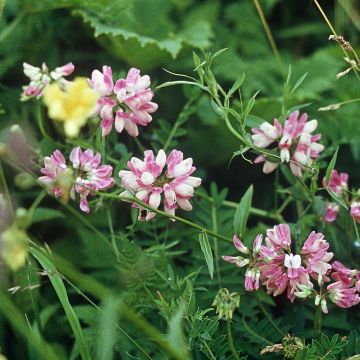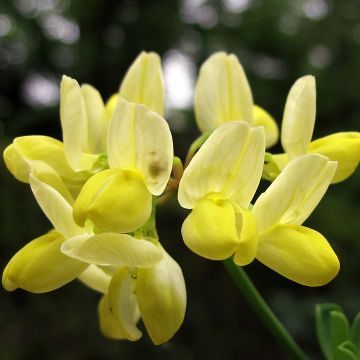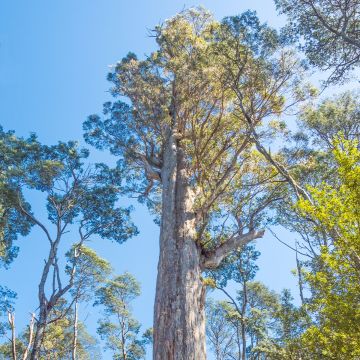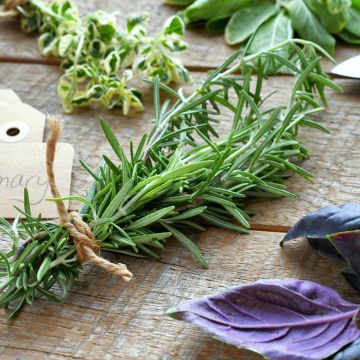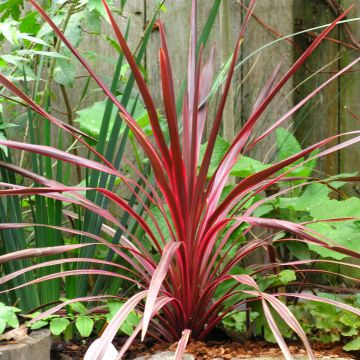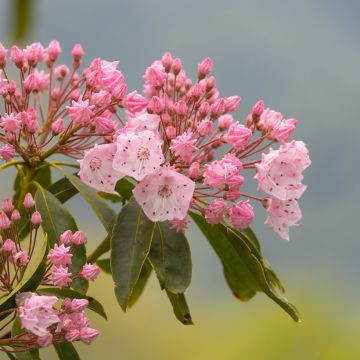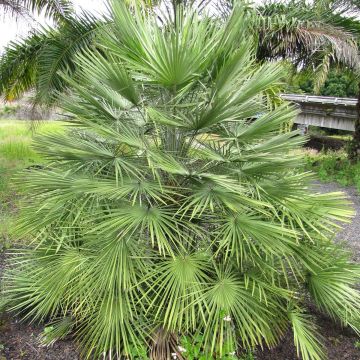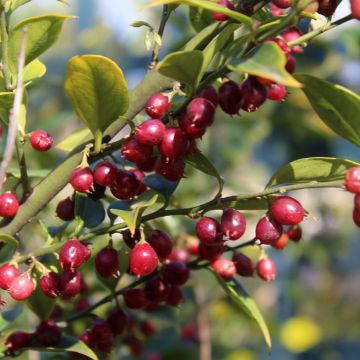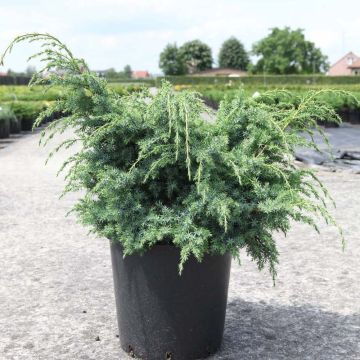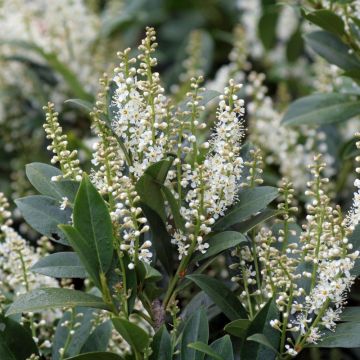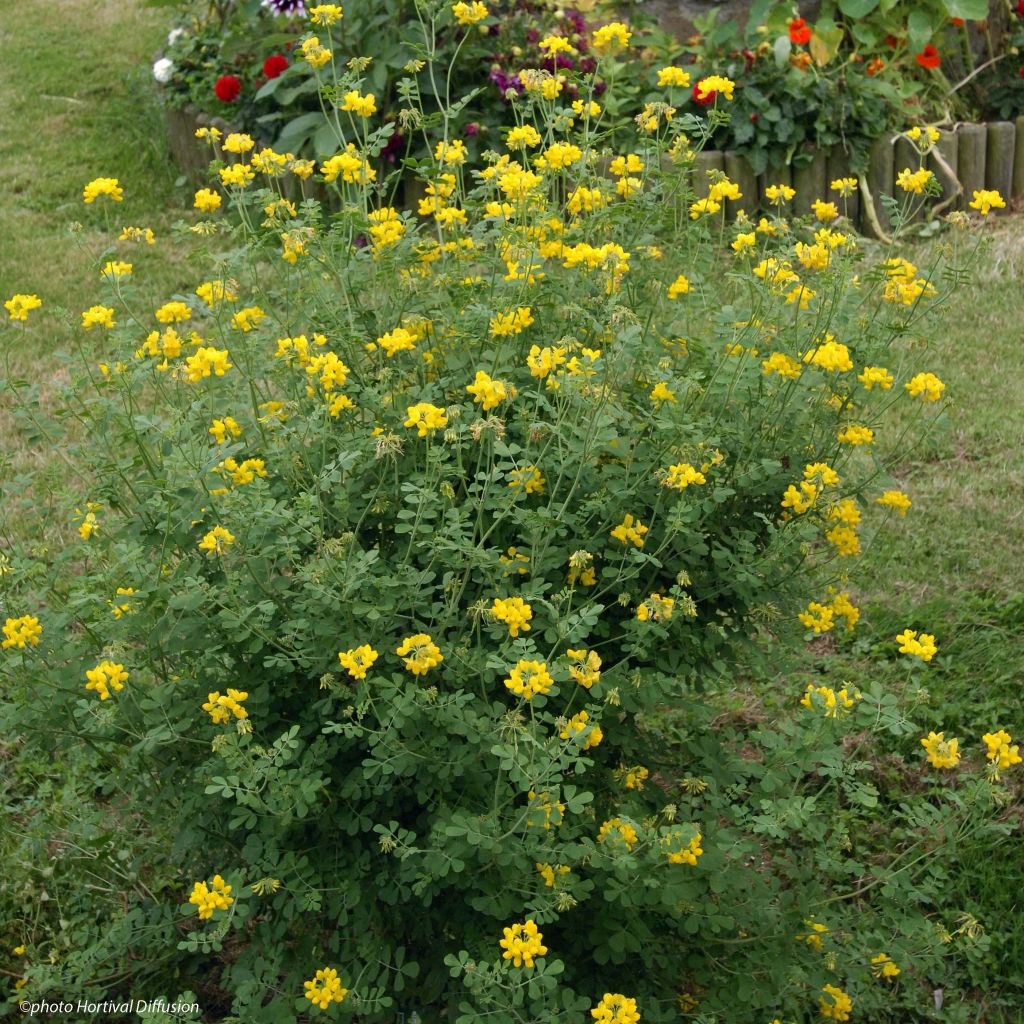

Coronille - Coronilla valentina subsp. glauca Sélection
Coronilla valentina subsp. glauca Selection
Coronilla valentina subsp. glauca Sélection
Scorpion vetch, Mediterranean crown vetch
Despite a rough start, has endured the long summer drought and now the incessant rains. Looking forward to a beautiful flowering next season. To be continued.
NATHALIE , 13/11/2023
This plant carries a 24 months recovery warranty
More information
We guarantee the quality of our plants for a full growing cycle, and will replace at our expense any plant that fails to recover under normal climatic and planting conditions.
From €5.90 for pickup delivery and €6.90 for home delivery
Express home delivery from €8.90.
Delivery to Corse prohibited: UE law prohibits the import of this plant from mainland France to Corse as part of the fight against Xylella fastidiosa. Please accept our sincere apologies.
More information

Does this plant fit my garden?
Set up your Plantfit profile →
Description
Coronilla valentina subsp. glauca 'Selection' is a delightful form of the glaucous coronilla, a small evergreen Mediterranean bush, selected by Minier nurseries for its pretty grey foliage and its endless, highly fragrant flowering, in a sunny yellow. Perfectly adapted to dry and hot climates, undemanding, low maintenance and hardy down to -12°C (10.4 °F), it forms a nice, dense ball, with a natural but neat appearance. This plant will make a sensation in a large pot on the terrace, to be protected in cold regions, and will be perfectly suited to a dry garden in mild climates.
Coronilla valentina subsp. glauca is a shrub of the fabaceae family, cousin of perennial peas, perfectly adapted to poor, dry and limestone soils. It is native to the Mediterranean basin, present in summer naturally in France, Spain, Portugal, Italy, Sicily, Greece, Algeria and Morocco. In nature, it grows on the edge of woods and on limestone hillsides. The 'Selection' variety, still little known, offers a greyer foliage than the species, and its flowering is more spread out over time. It is a bush with a dense and rounded habit, about 1m (3 ft 4 in) high and 75cm (29.5 in) wide, with fairly rapid growth but a relatively short lifespan. The peak of flowering is in April-May, followed by sporadic re-flowering, with rain and mild temperatures, almost throughout the year. The Bright yellow and nectar-rich flowers are tightly packed together and grouped in circular inflorescences at the ends of the branches. Their sweet and floral fragrance perfumes a whole area of the garden. The evergreen foliage is composed of leaves divided into 2-3 pairs of thick, grey-green leaflets.
This attractive shrub can be used in groups, rockeries, in a yellow, blue and white border for example, in the company of blue rosemary, creeping Ceanothus, Caryopteris, Perovskia, Convolvulus cneorum, Scilla sibirica or muscari, but also on the edge of light undergrowth with Phlomis samia, periwinkles, Acanthus and Geranium macrorrhizum. It is perfectly adapted to drought and resistant to sea spray. It will excel in a rocky or sandy garden, where few plants will grow. Create an evergreen group to accompany your coronilla, by mixing the foliage and scents of lavender, silver artemisias, blue rosemary and thyme. Add Californian poppies, a creeping rose (Rosa Grouse) and dryland euphorbias with a compact conifer for some dynamism in your composition. You can plant it in the ground (with appropriate drainage) in many regions, however for the coldest climates, cultivation in large pots is better; then take particular care of drainage, and water abundantly but spaced in time, letting the substrate dry between waterings.
Report an error about the product description
Coronilla valentina subsp. glauca Selection in pictures
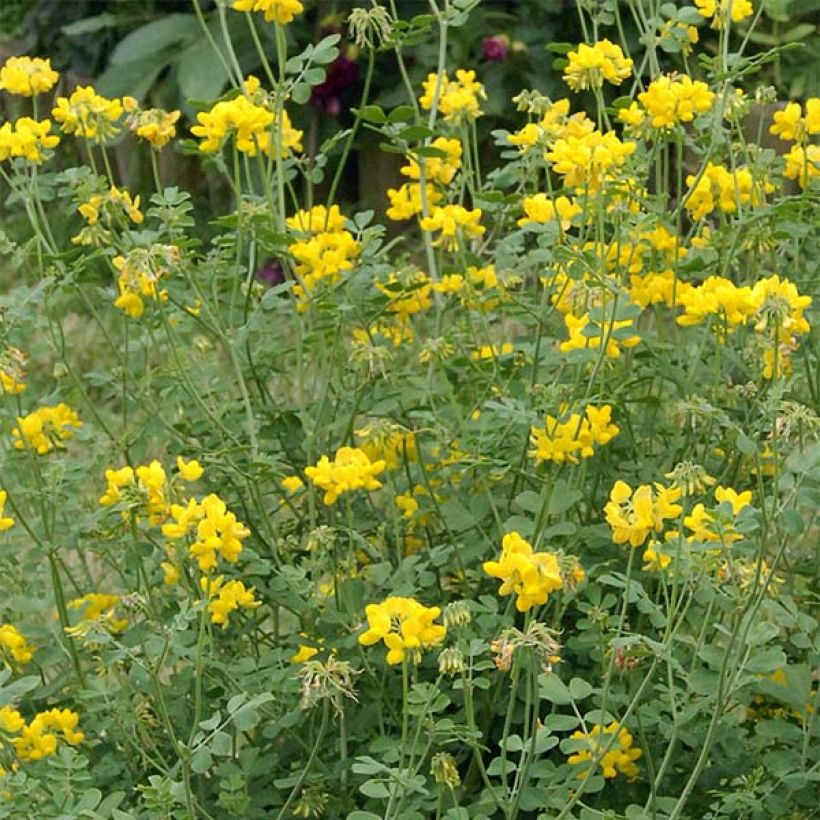

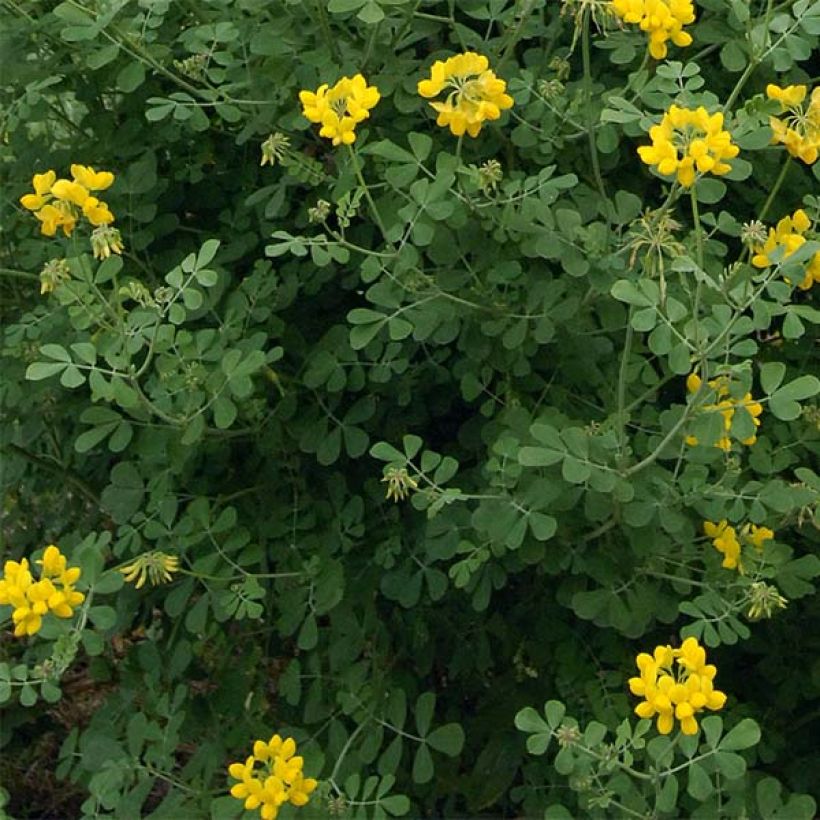



Plant habit
Flowering
Foliage
Botanical data
Coronilla
valentina subsp. glauca
Sélection
Fabaceae
Scorpion vetch, Mediterranean crown vetch
Cultivar or hybrid
Other Coronilla
Planting and care
Coronilla valentina subsp. glauca Selection prefers a perfectly drained, rocky or sandy, poor, slightly acidic, neutral or even very chalky soil. Plant it after the last frost in the north, and in September-October in hot and dry climates. It thrives in full sun as well as light shade or even more pronounced shade in warm regions and tolerates competition from the roots of old trees quite well. In these conditions, it is hardy down to -12°C/-15°C (5 °F) and will live on average for 7 years. Mulch it in winter in the coldest regions and protect it from the cold as much as possible. Place it in a warm spot in the garden, in full sun or against a south-facing wall, in a rocky or sandy slope in any substrate that does not retain moisture, which would be fatal to it in winter. You can prune the stems after flowering to encourage the plant to branch out, but avoid severe pruning. This relatively short-lived plant is easy to propagate by taking cuttings in late winter, and by taking stem cuttings just before flowering.
Planting period
Intended location
Care
-
, onOrder confirmed
Reply from on Promesse de fleurs
Evergreen shrubs
Haven't found what you were looking for?
Hardiness is the lowest winter temperature a plant can endure without suffering serious damage or even dying. However, hardiness is affected by location (a sheltered area, such as a patio), protection (winter cover) and soil type (hardiness is improved by well-drained soil).

Photo Sharing Terms & Conditions
In order to encourage gardeners to interact and share their experiences, Promesse de fleurs offers various media enabling content to be uploaded onto its Site - in particular via the ‘Photo sharing’ module.
The User agrees to refrain from:
- Posting any content that is illegal, prejudicial, insulting, racist, inciteful to hatred, revisionist, contrary to public decency, that infringes on privacy or on the privacy rights of third parties, in particular the publicity rights of persons and goods, intellectual property rights, or the right to privacy.
- Submitting content on behalf of a third party;
- Impersonate the identity of a third party and/or publish any personal information about a third party;
In general, the User undertakes to refrain from any unethical behaviour.
All Content (in particular text, comments, files, images, photos, videos, creative works, etc.), which may be subject to property or intellectual property rights, image or other private rights, shall remain the property of the User, subject to the limited rights granted by the terms of the licence granted by Promesse de fleurs as stated below. Users are at liberty to publish or not to publish such Content on the Site, notably via the ‘Photo Sharing’ facility, and accept that this Content shall be made public and freely accessible, notably on the Internet.
Users further acknowledge, undertake to have ,and guarantee that they hold all necessary rights and permissions to publish such material on the Site, in particular with regard to the legislation in force pertaining to any privacy, property, intellectual property, image, or contractual rights, or rights of any other nature. By publishing such Content on the Site, Users acknowledge accepting full liability as publishers of the Content within the meaning of the law, and grant Promesse de fleurs, free of charge, an inclusive, worldwide licence for the said Content for the entire duration of its publication, including all reproduction, representation, up/downloading, displaying, performing, transmission, and storage rights.
Users also grant permission for their name to be linked to the Content and accept that this link may not always be made available.
By engaging in posting material, Users consent to their Content becoming automatically accessible on the Internet, in particular on other sites and/or blogs and/or web pages of the Promesse de fleurs site, including in particular social pages and the Promesse de fleurs catalogue.
Users may secure the removal of entrusted content free of charge by issuing a simple request via our contact form.
The flowering period indicated on our website applies to countries and regions located in USDA zone 8 (France, the United Kingdom, Ireland, the Netherlands, etc.)
It will vary according to where you live:
- In zones 9 to 10 (Italy, Spain, Greece, etc.), flowering will occur about 2 to 4 weeks earlier.
- In zones 6 to 7 (Germany, Poland, Slovenia, and lower mountainous regions), flowering will be delayed by 2 to 3 weeks.
- In zone 5 (Central Europe, Scandinavia), blooming will be delayed by 3 to 5 weeks.
In temperate climates, pruning of spring-flowering shrubs (forsythia, spireas, etc.) should be done just after flowering.
Pruning of summer-flowering shrubs (Indian Lilac, Perovskia, etc.) can be done in winter or spring.
In cold regions as well as with frost-sensitive plants, avoid pruning too early when severe frosts may still occur.
The planting period indicated on our website applies to countries and regions located in USDA zone 8 (France, United Kingdom, Ireland, Netherlands).
It will vary according to where you live:
- In Mediterranean zones (Marseille, Madrid, Milan, etc.), autumn and winter are the best planting periods.
- In continental zones (Strasbourg, Munich, Vienna, etc.), delay planting by 2 to 3 weeks in spring and bring it forward by 2 to 4 weeks in autumn.
- In mountainous regions (the Alps, Pyrenees, Carpathians, etc.), it is best to plant in late spring (May-June) or late summer (August-September).
The harvesting period indicated on our website applies to countries and regions in USDA zone 8 (France, England, Ireland, the Netherlands).
In colder areas (Scandinavia, Poland, Austria...) fruit and vegetable harvests are likely to be delayed by 3-4 weeks.
In warmer areas (Italy, Spain, Greece, etc.), harvesting will probably take place earlier, depending on weather conditions.
The sowing periods indicated on our website apply to countries and regions within USDA Zone 8 (France, UK, Ireland, Netherlands).
In colder areas (Scandinavia, Poland, Austria...), delay any outdoor sowing by 3-4 weeks, or sow under glass.
In warmer climes (Italy, Spain, Greece, etc.), bring outdoor sowing forward by a few weeks.

































